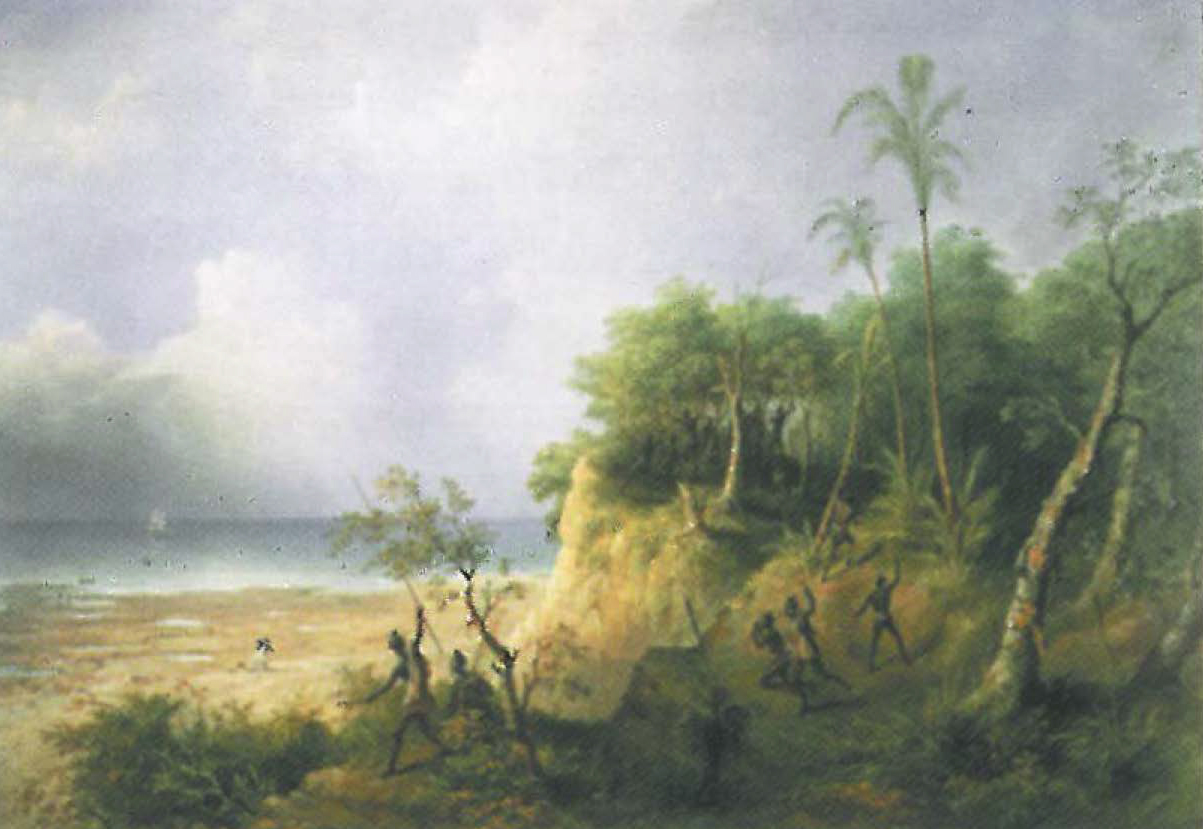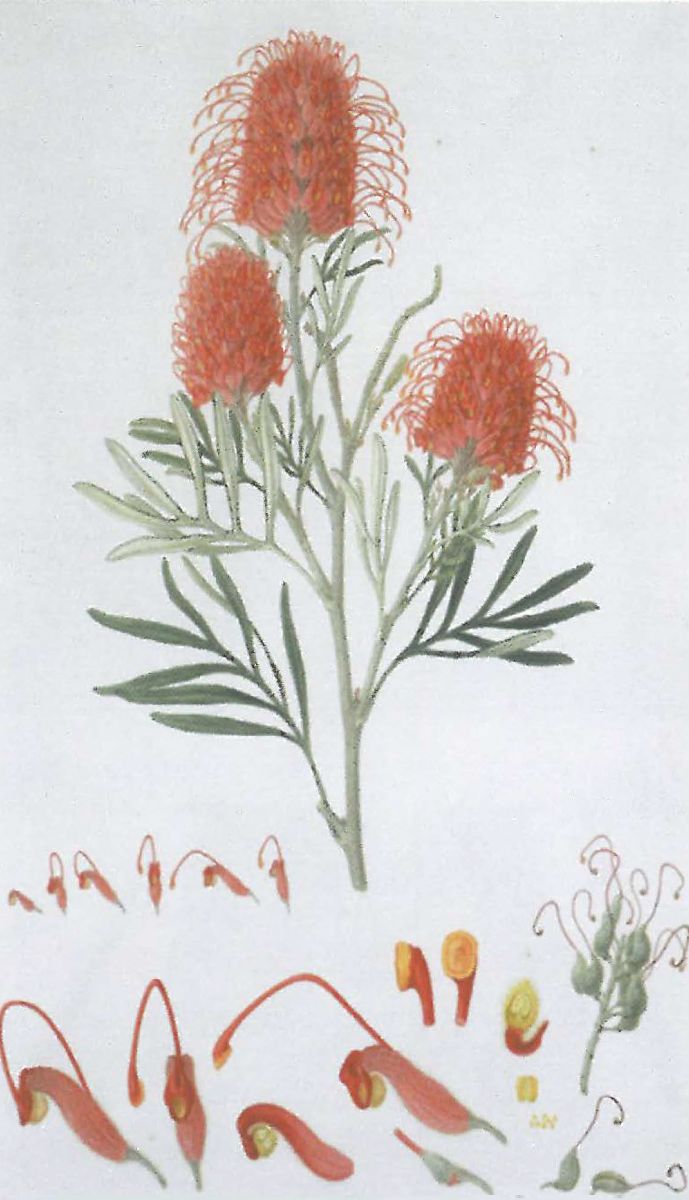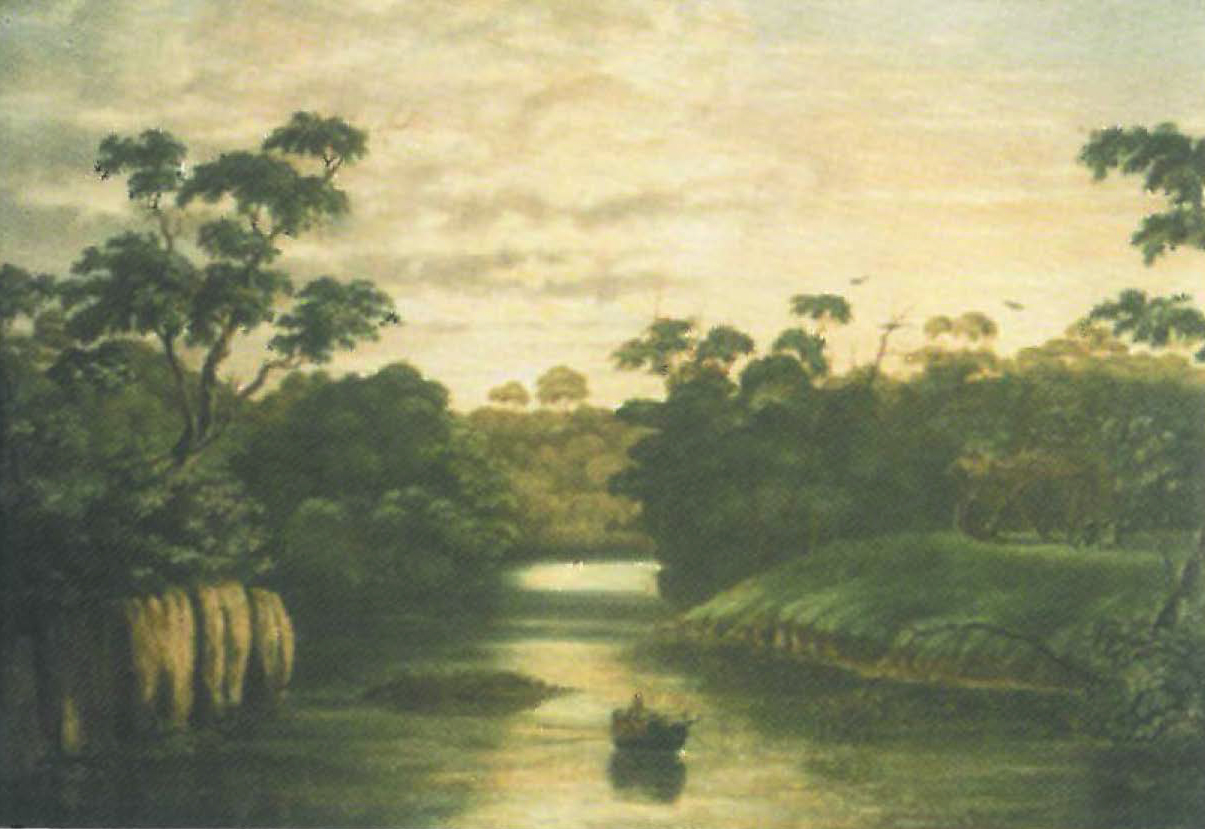
Blighted Paradise was a commendably ambitious and scholarly undertaking that sought to summarize the differing responses of colonial artists, both amateur and professional, when confronted by the vast chunk of Australia that rests above latitude 23 South, the Tropic of Capricorn.
Last century, as seen in the evocative exhibition Escape Artists, tropical Australia represented a sensual, beach-combing release from an otherwise conservative country. One hundred years before Fairweather and Friend however, the north was a geographic and visual void, that was only slowly filled-in by chart-makers, naval draughtsmen, explorers and settlers.
The exhibition began impressively with some botanical masterpieces by Ferdinand Bauer, amongst others. With Redout in Paris, Bauer represents the last of the era of sumptuous scientific illustration, and he must have shaken his head at the efforts of William Westall, the youngster with whom he was sharing the Great Cabin of the Investigator. Westall didn't like Terra Australis that much, it proved no Antipodean India, yet his scratchy studies of scrub and pandanus feel completely authentic and convincing.
Many of the landscape depictions that follow are notable for the presence, or absence, of the region's indigenous people. One of the most shocking images of the period, not exhibited here, is Westall's pencil sketch Blue Mud Bay, body of a native shot on Morgans Island (1803). Elsewhere, a sense of melancholy prevailed. Artist Graham Gore exemplifies the strange reach of the Royal Navy. His grandfather had sailed with Cook, his father with Bligh. He was artist on board the Beagle. His view of the Flinders River during a good season is unexceptional enough, until we glimpse in the shadows of the bush an aboriginal burial-place. Gore died in 1847 with Sir John Franklin searching for the North-West Passage.

One of the strangest 19th century paintings of Australian interest is also a result of the Beagle voyage, Richard Beechey's Lt J Stokes speared in the lungs while discovering the Victoria River, Australia 1839. (1863) Beyond the weirdly specific title, the actual incident is a footnote in Victorian exploration, yet its theme was central to the Empire-the ardent explorer who risks all for England and enduring fame. Exploring for John Lort Stokes was an act of emulation. "There is" he wrote, "an inexpressible charm in treading in the track of the mighty dead."
There was one aspect of tropical Australia that all but defeated artists of the period. North-travelling naturalist J B Jukes begins his Narrative of the surveying voyage of HMS Fly (1847) with the memorable sentence "On January 7 1843 I landed for the first time in my life on a coral island", and one of the surprising aspects of Blighted Paradise was the inability of artists to engage with the Great Barrier Reef. Here however they were faced with a conundrum; how to depict something so vast, yet visually elusive. While no photographs were included in the exhibition perhaps an exception could have been made for those by W Saville-Kent, that illustrate his extraordinary The Great Barrier Reef of Australia.(1893)
When people appear in Blighted Paradise they are for the most part doggedly confounding an unfamiliar Nature-sailors struggling in the sea after a shipwreck (Westall), redcoats parading amongst the ants of Port Essington (John MacArthur) or seamen toiling to right a ship tumbled by a cyclone (Owen Stanley).

These are the largely anonymous ranks of armies and navies, yet there was portraiture in the tropical north and Westall's powerful study of the Makassan mariner Pobasso, or the airbrush-like portraits of the Seepoys, successful Chinese merchants on the Palmer River gold-fields, in the James Cook museum would have been worthy of inclusion.
Works by two women conclude this fascinating survey. Ellis Rowan was one of those bossy Victorians who gathered up their skirts and did the unexpected thing. She explored the tropics in search of rare flowers, and working in the 1890's, there is something almost decadent in her febrile, overwrought compositions. One day settler Lucy Gray observed An interesting figure in a flowing white dress sailing along the hot sands, and this haunting image of someone serenely indifferent to European presence, was a rare reminder of the cultural gulf, largely unbridgeable by artists, that prevailed north of the Tropic of Capricorn in the 19th century.
Blighted Paradise is accompanied by a crisp catalogue, and website.












